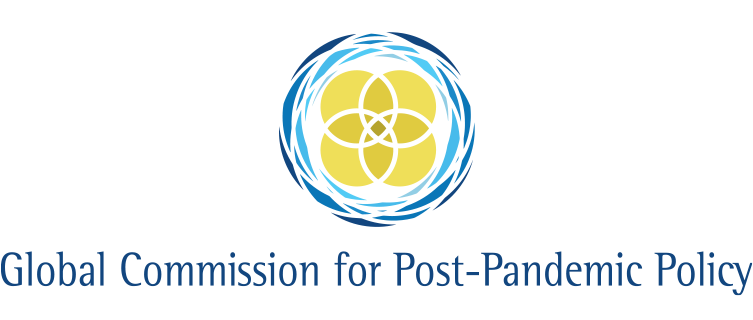Research Monitor
February 3rd 2021
Health
The Johnson & Johnson COVID-19 vaccine
On January 29th, healthcare giant Johnson & Johnson announced the preliminary results of a Phase III ensemble clinical trial of its new COVID-19 vaccine candidate. The results suggest that the vaccine––which requires only a single dose––is both safe for use and effective at preventing moderate to severe infection with COVID-19.
Initiated in September 2020, the ongoing Phase III trial consists of 43,783 participants aggregated from across the United States, Latin America and South Africa. For participants from across all the geographic areas––including those infected with the novel South African strain of SARS-CoV-2––the Johnson & Johnson vaccine recorded an efficacy of 66% in preventing moderate to severe infection with COVID-19, 28 days after vaccination.
The trial suggests that the efficacy of the vaccine continues to improve over time following innoculation. After 28 days, the vaccine appears to be 85% effective at preventing severe cases of COVID-19. By 49 days post-vaccination, not a single severe case of COVID-19 had been recorded. Notably, there was some geographic variation in the efficacy results. The level of protection against moderate to severe infection with COVID-19 was 72% in the United States, 66% in Latin America and 57% in South Africa, respectively. This suggests that the Johnson & Johnson vaccine is less effective against the novel South African viral strain, and possibly against the Brazilian viral strain too.
Although the vaccine is somewhat less effective than the Pfizer-BioNTech and Moderna vaccines––both with efficacies in excess of 90%––the fact that it requires only a single dose and is easier to transport and store than either of those vaccines means that the Johnson & Johnson vaccine may be able to reach more people faster than any existing competitor.
The Novavax COVID-19 vaccine
On January 28th, US biotechnology company Novavax announced the preliminary results of a Phase III clinical trial of its COVID-19 vaccine candidate. The results suggest that the vaccine is both safe for use and effective at preventing mild, moderate and severe infections with COVID-19.
In partnership with the British government’s Vaccines Taskforce, the ongoing Phase III clinical trial enrolled over 15,000 participants from the United Kingdom. In that sample, the vaccine demonstrated an efficacy of 89.3% at preventing mild, moderate and severe cases of COVID-19. This is close to the benchmarks set by the Pfizer-BioNTech and Moderna vaccines, albeit from a smaller sample size.
Of the COVID-19 cases recorded, more than half were caused by the United Kingdom’s more infectious strain of the virus. The vaccine was 95.6% effective at preventing infection with the original COVID-19 strain, dropping to 85.6% with the more infectious British strain. In the announcement, Novavax also reported results from a Phase IIb clinical trial in South Africa. The trial enrolled over 4,400 participants, with the vaccine demonstrating an efficacy of 60% in preventing mild, moderate and severe cases of COVID-19 in that sample. Of the COVID-19 cases recorded, 92.6% were caused by the South African viral strain.
While these results are encouraging, the sample sizes involved remain relatively small. As a consequence, Novavax has now enrolled over 16,000 participants out of targeted enrolment of 30,000 for a larger Phase III clinical trial to be run in the United States. The trial will receive support from the programme formerly known as Operation Warp Speed, a government partnership.
The Sputnik V COVID-19 vaccine
On February 2nd, the interim results of a Phase III clinical trial of Sputnik V––a COVID-19 vaccine developed in Russia––were published in The Lancet, a prestigious medical journal. The peer-reviewed results are encouraging, suggesting that the vaccine is both safe for use and effective at preventing mild, moderate and severe infection with COVID-19.
Between September 7th and November 24th 2020, 21,977 participants from across Russia were enrolled in the ongoing Phase III clinical trial of the Sputnik V vaccine. On enrolment, every participant was required to test negative for the virus before being given the first dose of the two-dose vaccine. The interim results reported stem from follow-up tests performed on each participant after receipt of the second dose of the vaccine, 21 days later.
In this sample, the Sputnik V vaccine demonstrated an efficacy of 91.6%. This is similar to the high marks set by the Pfizer-BioNTech and Moderna vaccines––the two most effective vaccines currently on the market. In addition, the vaccine needs only to be kept at temperatures of 2-8°C––standard refrigerator conditions, making it easier to store and transport than either the Pfizer-BioNTech and Moderna vaccines, which require storage at -70°C and -20°C respectively.
The vaccine was developed by the Gamaleya Research Institute of Epidemiology and Microbiology, run under the auspices of the Russian Ministry of Health and headquartered in Moscow. The Sputnik V vaccine has been a source of controversy. It was registered and approved by Russian authorities on 11th August 2020––a month before the Phase III trial of the vaccine had even begun. This hurried process earned a public rebuke from the World Health Organization. Nevertheless, the Russian authorities began distribution in early December. The vaccine is now approved and available in 17 nations, including Argentina, Uruguay and Iran. These Phase III results are likely to encourage wider approval and adoption.
Economics
A new paper published by the Centre for Economic Policy and Research makes the economic case for the containment of COVID-19 through short and intense lockdown measures, rather than mild and prolonged restrictions.
From October 2020 to January 2021, the resurgence in COVID-19 case-numbers worldwide rekindled the debate over how best to contain the spread of the virus while minimising the economic costs of any imposed restrictions. To clarify the economic effects of different containment strategies, Francesca Caselli, Francesco Grigoli and Damiano Sandri from the International Monetary Fund looked at high-frequency economic proxy data from a large panel of advanced, emerging and low-income economies to better understand the drivers of the observed economic contractions.
The researchers found that, while lockdown measures themselves contributed significantly to a drop in economic activity while they were in place, they were not the only contributing factor. Independent of the implementation of formal restrictions, voluntary social distancing by consumers––thus withholding spending to avoid exposure to the virus––also took roughly as severe a toll on economic activity.
This insight has important implications. There is strong evidence that stringent lockdowns reduce the rate of new COVID-19 infections much more rapidly than do milder restrictions. However, what has stopped governments pursuing stringent lockdowns are concerns about the economic costs of such measures. The researchers find that these fears are largely justified––stringent lockdowns do imply greater direct costs than milder restrictions. However, what is also true is that stricter lockdowns––which drop case numbers faster––entail lower costs from consumers withholding spending to avoid exposure to the virus.
On balance, the second effect outweighs the first, on average. As a consequence, Caselli, Grigoli and Sandri recommend that even though it is the harder political choice, short and stringent lockdowns should be the default method for restricting the spread of the virus.
Politics
A new paper published in the journal PLOS Biology argues that anti-science political movements should be treated as a major threat to public health.
In the United States, the last five years witnessed an unprecedented politicisation of the biomedical sciences. The process started with the undermining of trust in vaccines for vaccine-preventable diseases––namely measles––but reached its nadir in the Trump administration’s refusal to coordinate a national response to the COVID-19 pandemic or to promote face masks, social distancing or other evidence-based safety measures.
Dr Peter Hotez––Dean of the National School of Tropical Medicine at Baylor College of Medicine––makes the case that what has become an incipient right-wing anti-science political movement should be considered as being as much of a threat to public health as COVID-19 itself. According to the Institute for Health Metrics and Evaluation, had the American public embraced 95% public mask use between September 22nd 2020 and February 28th 2021, almost 130,000 lives could have been saved.
The responsibility for those deaths must fall firmly in the laps of the various forces (individuals, politicians and media) who egged on distrust in evidence-based medicine and medical disinformation. The failure to do so risks even greater failures in the future, argues Dr Hotez. As a cautionary tale, Dr Hotez references Stalin’s Great Purge of agricultural scientists and geneticists in the Soviet Union in the 1930s and 1940s, a move that resulted in a famine that killed millions.
Photo by Shooter name with link on Unsplash
GCPPP Newsletter
We now publish a weekly newsletter to inform friends and supporters of the Global Commission’s progress and to provide updates when new content is published. Please sign up here:








